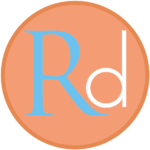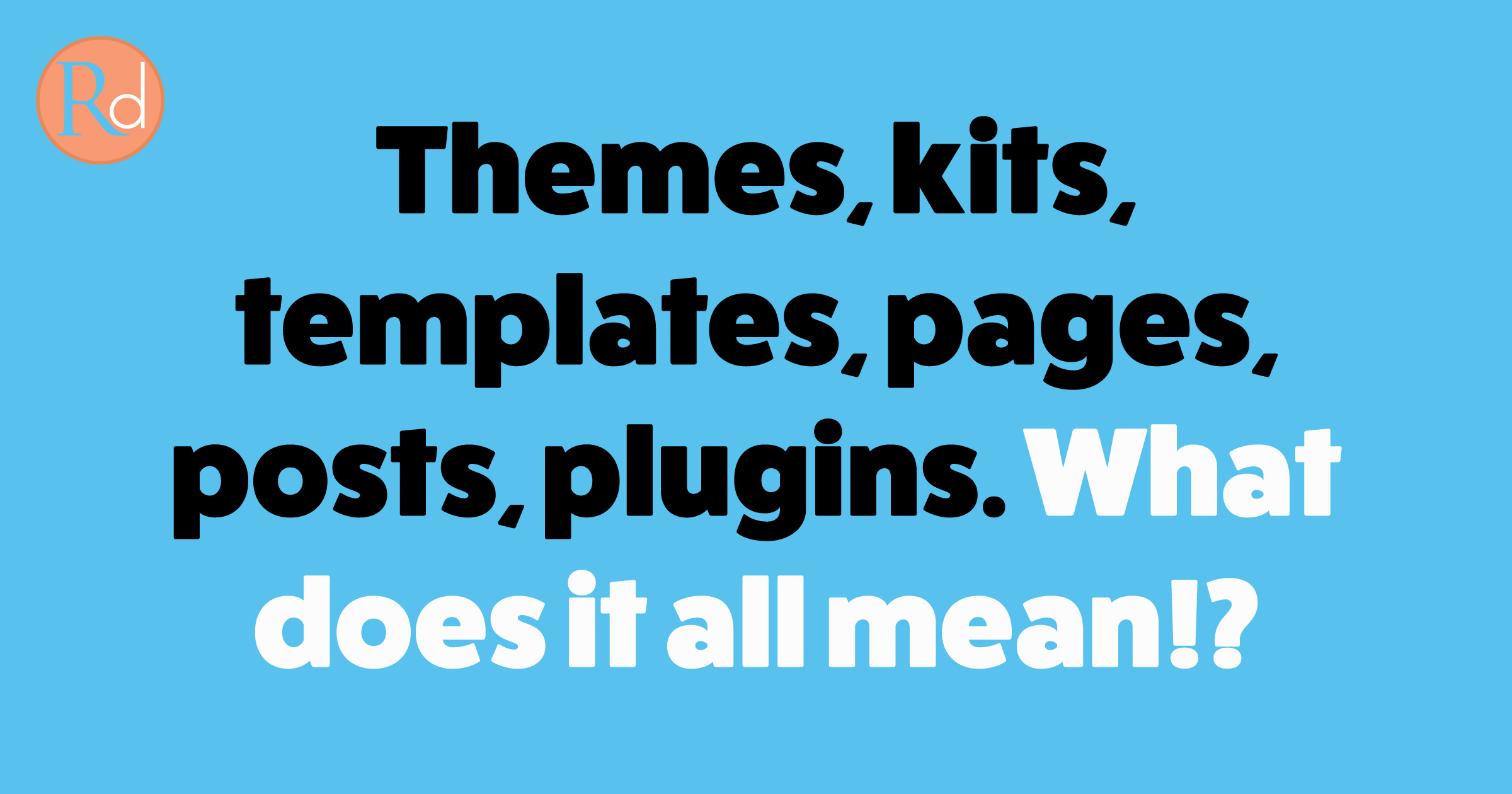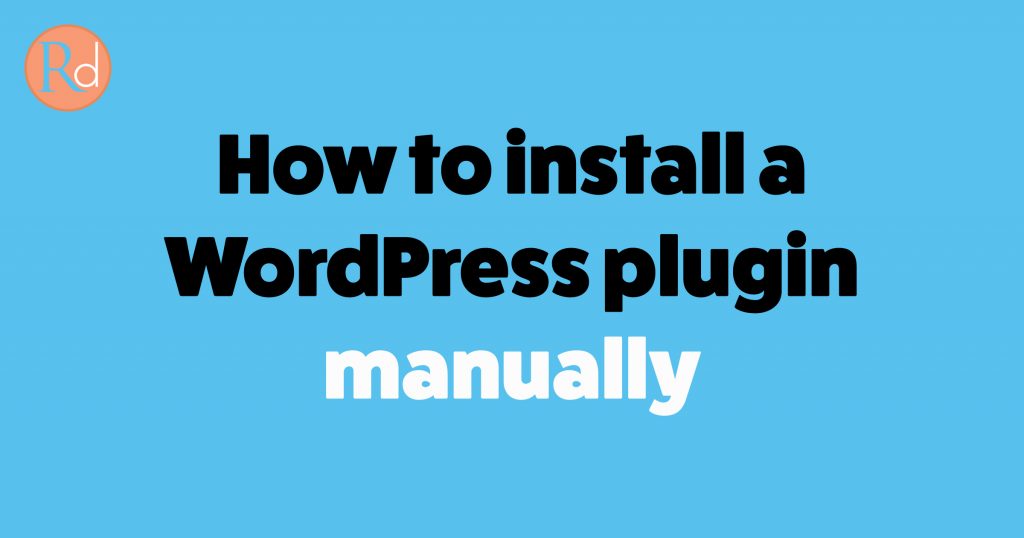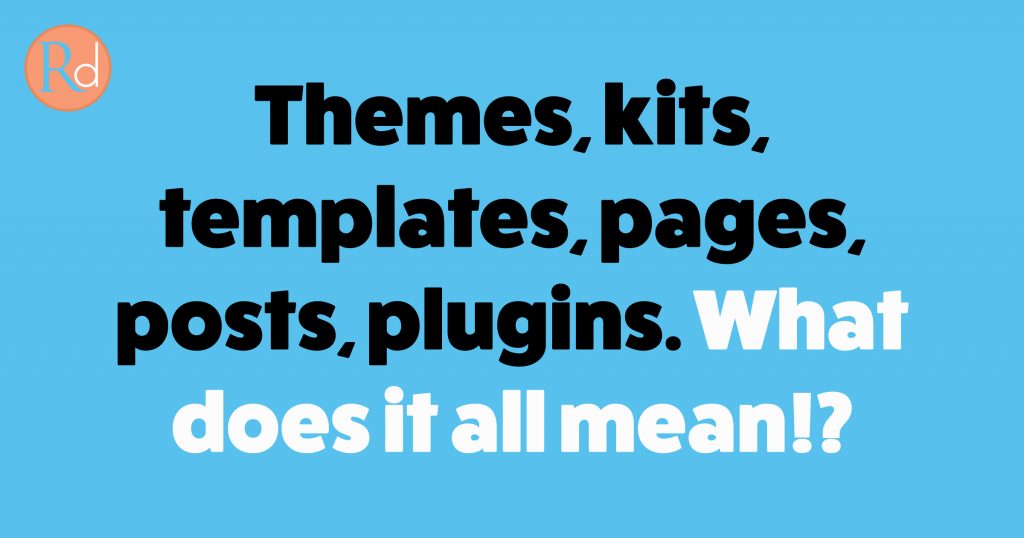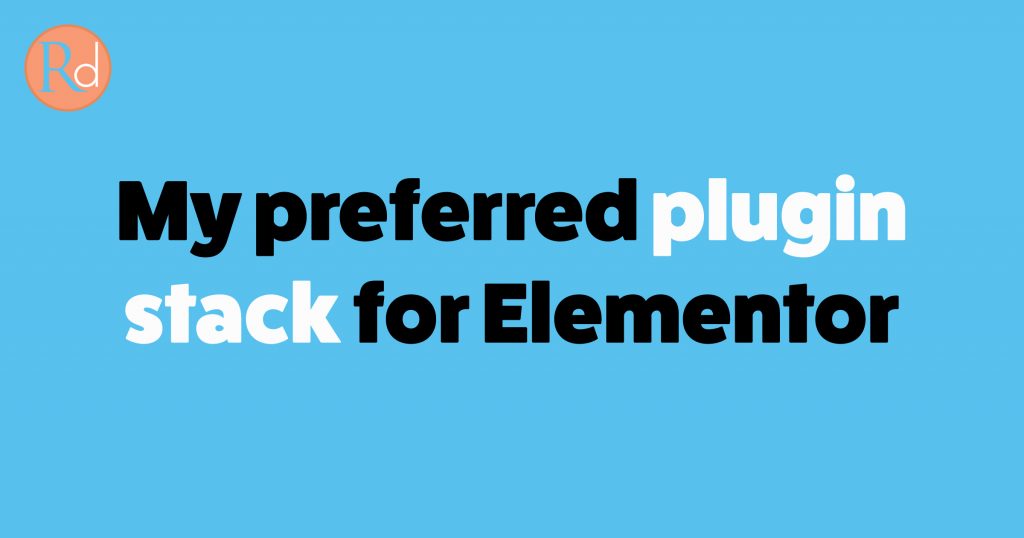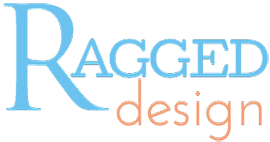WordPress is a confusing place with a lot of terminology you may not be familiar with. Whilst using Elementor can make things easier, it’s good to know the basics of how WordPress functions as this will help you get the best out of it and your site.
This blog looks at a site using Elementor specifically so may not necessarily be suitable if you’re just using WordPress or another page builder.
Let’s start with the basics.
WordPress is a content management system – essentially a database with a face. The face being your website. It stores the information you put into it and then displays that to the world.
Elementor sits within WordPress as a plugin (more on that below) and adds visual design functionality.
Themes
All WordPress sites have to have a theme. These can be found in the Themes section in the back-end of your site. WordPress makes its own themes, named by the year they were created, as does Elementor. The Elementor theme is called Hello and can be found by searching in the add theme section. WordPress themes come pre-installed with the latest one being the one that’s activated.
Paragraph on what a theme does.
There are lots of themes available that promise all sorts of bells and whistles, but if you’re choosing to use Elementor to build your site then Hello is perfect. Themes often add a ton of stuff to your site that you either don’t need or can’t figure out, and Hello does none of that. It’s a super lightweight theme that allows you complete control over how your site looks.
My advice: don’t be tempted to download a theme that claims to be specifically for your industry. They’re usually not well built, might not be compatible with Elementor, and will end up wasting you time. They might also slow your site down and that’s a big no no.
Advanced: if you plan on editing the function.php file or other theme files for your site (if you don’t know what that is then chances are you won’t be doing it!) then it’s good practice to install a child theme. A child theme is related to the main theme and pulls some styles of it, but doesn’t get updated when the main theme does so any changes you make to the theme files (function.php) won’t be overwritten when the main theme gets updated. Hello Child theme is available to download here and the zip file will need to be manually installed through the Add Themes page.
I always install a child theme and activate it just to be on the safe side.
Kits
Kits are an Elementor creation and can be found in . These provide Elementor pages and designs to get you started and can be great if you don’t know where to begin.
As with themes, these can sometimes be badly built (or not taking into account best practices) and include things you don’t really need so be careful when selecting your kit. If you think you can design your site without one then that is definitely the best approach.
Templates
Confusingly there are two types of templates in Elementor. The first are smaller, pre-designed sections and can be found when you’re starting a new container (or section if you’re still using those. Check out these blogs for more information). These are actually pretty good if you need help setting up the layout so use these if you can.
The second, if you’ve opted for Elementor Pro, can be found under Elementor > Templates. Think of these as the building blocks of your site. Here you can set up headers and footers to appear on ever page of your site, blog post templates (more on that below), and various shop pages if you’re an e-commerce store using WooCommerce. You create these templates using the same Elementor editor as for pages and then set conditions which dictate where they appear on the site.
Pages
Next up is one of the fundamental parts of your site and WordPress. Pages are the main, well, pages of your website. To get started, click Add a page and you’ll be greeted with the native WordPress page editor (called Gutenberg). Enter your page title where it says title, then click the button that says Edit with Elementor. This turns the page into an Elementor page rather than a Gutenberg page.
Here you can design your page and if you’ve already set a header and footer to appear on every page you’ll see those too. If you’re new to Elementor I’ve written a blog on getting started and best practices.
Posts
Posts are different from pages and should mainly function as blog-type entries to your site. WordPress was originally a blog hosting service so this used to be the main event.
If you’re hosting a blog using Elementor Pro then I suggest first creating a blog template in the Templates section (see above) before starting to write your blog. Read how to set up a blog post in Elementor.
Once you have your template then navigate to the posts section of the back-end. When you add a blog it’ll look like the new page did so go ahead and enter the title. This is where it differs though. My suggestion here is to continue using the native WordPress editor (Gutenberg) to write your blog. If you’ve set up your blog template correctly then this text will sit in the template really nicely. If you’ve chosen to design the blog in Elementor it’ll still sit within the template you’ve created, but there might be additional padding and other bits that will need fixing to get it looking good.
Plugins
Plugins are essentially bits of software that add functionality to a WordPress site. WordPress itself is quite basic as it was originally designed as a blog hosting platform, so all the additional bits (like Elementor) mean the platform can be used to create full blown websites.
There’s a few things to consider when choosing which plugins to use, and some plugins may break your site. When choosing a plugin run through this checklist to work out whether it’s going to be ok to install.
- Ask yourself if you really need this plugin or if you could use an existing one to create the function you’re looking for?
- How many downloads does the plugin have? If it’s a small amount it may not be a great plugin.
- When was the last time it was updated and is it compatible with your version of WordPress? A plugin that hasn’t been updated in a while may not be very secure.
- Give it a Google. Does the plugin have its own website? This is a good indication of a reputable company.
- Read some reviews. Check out the reviews on the plugin’s page on WordPress and see what folks are saying about it.
Check out my blog where I discuss my preferred plugin stack in more detail and this one where I talk about best practices to keep your plugins up to date.
